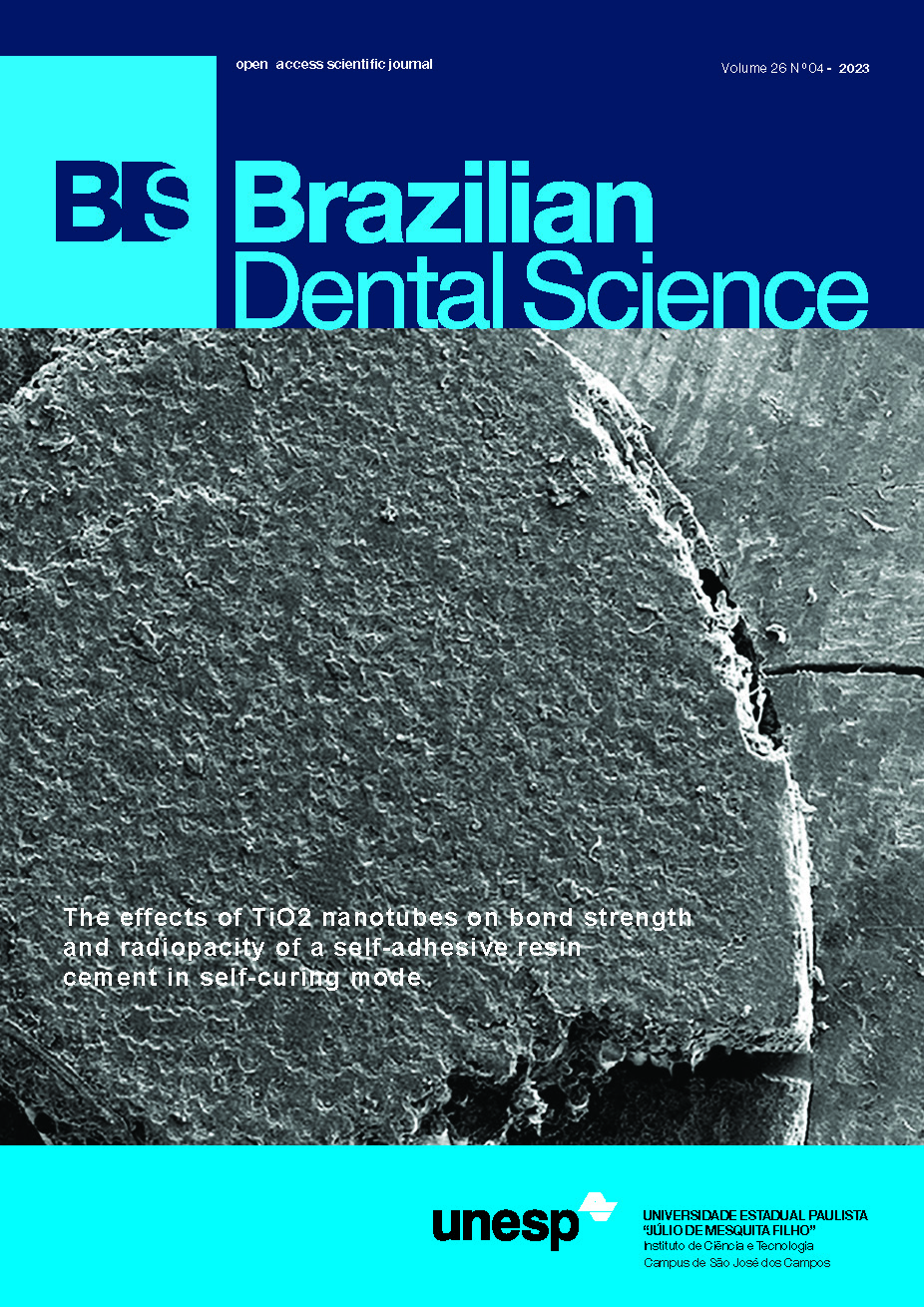Systemic scleroderma: imaging findings of diagnosis and clinical management of temporomandibular joint disorders
DOI:
https://doi.org/10.4322/bds.2023.e3998Abstract
Scleroderma, an autoimmune disease, directly affects the production of collagen in the connective tissue. In its systemic form, the disease causes oral manifestations such as: limited mouth opening, xerostomia, periodontal disease, thickening of the periodontal ligament and bone resorption of the mandible. This case report aims to draw attention to the difficulties encountered in providing dental care to patients with scleroderma and also to highlight the imaging findings, with emphasis on the temporomandibular joints, which are of interest to dentists about the disease. In the present case, the patient presented bilateral condylar erosion, in addition to disc displacement without reduction. Due to the systemic condition of the patient, it was decided to make an individualized occlusal splint. The limitation of mouth opening is a limiting factor for the manufacture of prostheses and plates, which is why partial prostheses are indicated and are easily removed by the patient. The decisions taken have a great impact on the health and quality of life of patients in these conditions, so there is a need for multidisciplinary involvement in order to arrive at the best treatment plan. After five years of using the stabilizing plate overnight, the patient reports greater comfort and muscle relaxation upon waking up.
KEYWORDS
Case Reports; Diagnostic imaging; Systemic scleroderma; Temporomandibular joint; Temporomandibular joint disorders.
Downloads
Published
How to Cite
Issue
Section
License
Brazilian Dental Science uses the Creative Commons (CC-BY 4.0) license, thus preserving the integrity of articles in an open access environment. The journal allows the author to retain publishing rights without restrictions.
=================




























